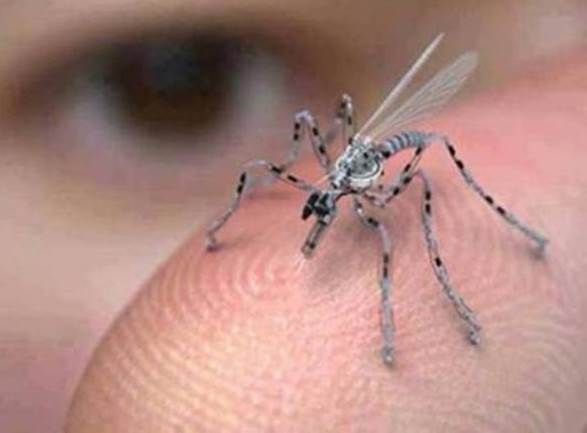This Is Not A Mosquito!! Look closely.....Incredible
Have you ever wished you could be a fly on the wall to spy on what's going on or being said?
No, this isn't a real mosquito. It's an insect spy drone for urban areas, already in production, funded by the US Government. It can be remotely controlled and is equipped with a camera and a microphone. It can land on you, and even has the potential to take a DNA sample or leave RFID tracking nanotechnology on your skin. It can fly through a slightly open window, or it can attach to your clothing until you unwittingly take it into your home. It can then be guided to the top of a curtain or other invisible location where it can scope entire rooms and monitor everything being said. Given the current push for surveillance cameras to be everywhere, one is left with little doubt that there are plans for these micro gadgets.

Have you ever wished you could be a fly on the wall to spy on what's going on or being said?
No, this isn't a real mosquito. It's an insect spy drone for urban areas, already in production, funded by the US Government. It can be remotely controlled and is equipped with a camera and a microphone. It can land on you, and even has the potential to take a DNA sample or leave RFID tracking nanotechnology on your skin. It can fly through a slightly open window, or it can attach to your clothing until you unwittingly take it into your home. It can then be guided to the top of a curtain or other invisible location where it can scope entire rooms and monitor everything being said. Given the current push for surveillance cameras to be everywhere, one is left with little doubt that there are plans for these micro gadgets.




































































































